Northern Irish inventor reveals his best machinery creations
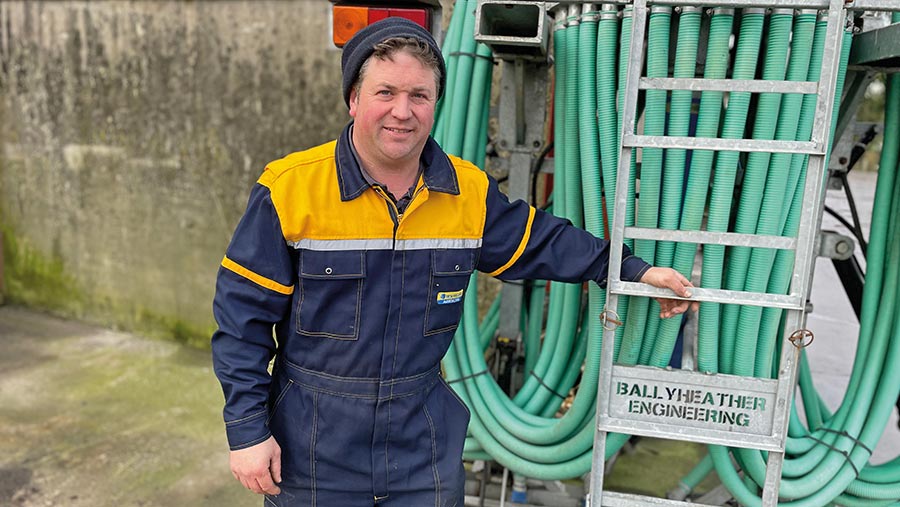 Albert O'Neil © James Andrews
Albert O'Neil © James Andrews Since he was old enough to wield a welding torch, Albert O’Neill has been busy designing and building novel kit to improve the efficiency of his family’s dairy farm in County Tyrone, Northern Ireland.
Every corner of the yard and 200-cow dairy unit is littered with his past projects, from simple-but-nifty hand tools to elaborate tractor-mounted implements and clever handling systems.
Each of these has been designed to solve specific problems that off-the-shelf equipment fails to address, making them far more than just a cost-saving exercise.
See also: Seasoned inventor reveals his niftiest farm creations
“I’ve never been interested in making copies of other machines,” says Mr O’Neill. “There’s never a shortage of jobs that can be streamlined on the farm, which gives me endless inspiration for new pieces of equipment.”
As a Farm Invention Competition regular over the past 20 years, plenty of his projects have graced the pages of Farmers Weekly.
Some have attracted so much interest that he has set up a machinery-making sideline and started building them to order. These products are sold through his Ballyheather Engineering page on Facebook.
Below, we look at the three products he is offering for sale at present, plus a few highlights from the line-up of kit that he has built for his own farm.
Ballyheather Engineering products available to buy
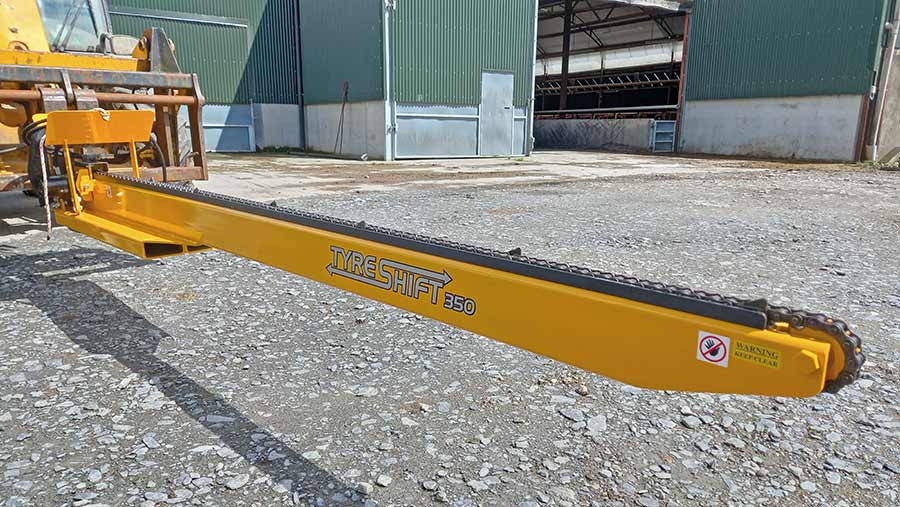
© James Andrews
Tyreshift
Fed up with the laborious process of lugging tyres and sidewalls onto silage clamps, Mr O’Neill came up with an idea for automating the process.
The result is the telehandler-mounted Tyreshift 350, which allows operators to pick up a 3.5m-long row of tyres or sidewalls and distribute them evenly over the clamp.
It slots onto pallet tines and has a hydraulically driven chain with specially made links that hook the tyres and flick them onto the sheet.
It works a bit like a large, slow-moving chainsaw, but rather than having constant lubrication, the chain runs in a specially made nylon guide.
Operators can drive up onto the clamp and use the tool to deposit the tyres evenly or reach over the side. Either way, it saves a lot of backbreaking manual handling.
By reversing the hydraulic motor, the Tyreshift can also be used to pick up tyres.
Thanks to an angled “nose” the tool can be poked under the tyre and the chain will drag it back, making room for the next one to be collected.
Due to its weight when fully loaded, Mr O’Neil is only building a 3.5m model.
Any larger would be too much for a typical agricultural telehandler. He does make a heavy-duty version to accommodate larger loading shovel tines, but this is also 3.5m long.
Finishing touches include a pair of check chains to avoid it sliding off the tines, and a film holder complete with securing rope. The Tyreshift costs £2,200 including delivery.
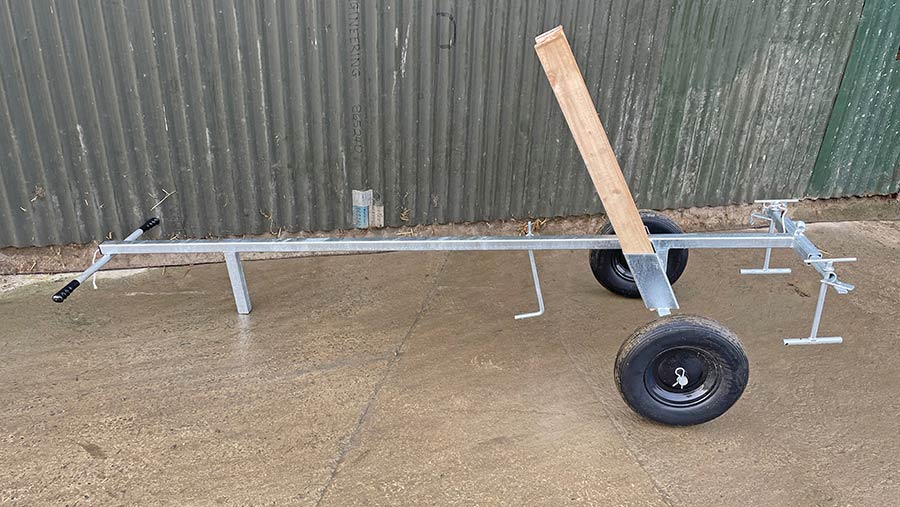
© James Andrews
Mixing slat lifter
The mixing slat lifter is another tool for cutting down on manual graft, making it much easier to access underfloor slurry stores.
Removing these slats safely by hand is typically a two-man job, but, one person can do it with the lifter without even getting their hands dirty.
The tool runs on a pair of puncture-proof wheelbarrow wheels, with a handle at one end and a set of turnable lifting prongs at the other.
By pulling a rope at the handle end, these prongs turn 90-deg, allowing them to be lowered through the slots in the centre of the slats.
Once the rope is released, a spring causes them to return to their original position so that the slat can be levered out.
Thoughtfully, Mr O’Neill has also incorporated holders for four wooden bearers, allowing the slats to be put down and picked back up again with minimal fuss.
The tool is designed to be low maintenance, with a full galvanised finish and no bearings to wear out. It costs £440.
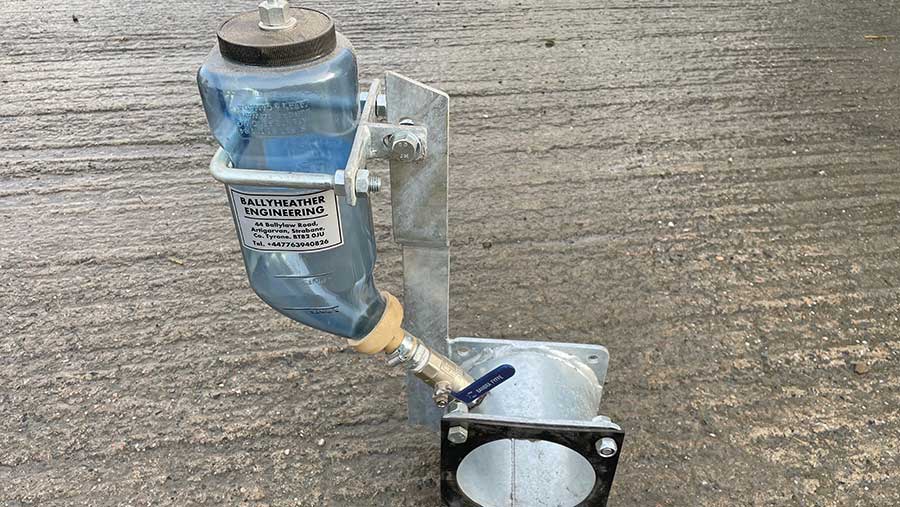
© James Andrews
Clover hopper
A slurry tanker and dribble bar can be an effective tool for establishing clover in a grass ley.
Typically, the seed is mixed with the slurry during filling, but it’s tricky to distribute it evenly throughout the load.
Mr O’Neill’s answer to this conundrum was to design a small hopper that feeds seed into the slurry between the fill pipe and the gate valve in a controlled manner.
Seed flow is adjusted using a small tap, allowing operators to match the output to the speed at which the tanker is filling.
The hopper is made from clear plastic so that it’s easy to see how much is going in and a breather pipe at the top prevents the sides of the tank being pulled in as it empties.
The hopper comes with its own section of galvanised pipe, complete with gaskets, so buyers can simply bolt it into the existing pipework.
For best results, Mr O’Neill says there needs to be some moisture in the ground when the seed is applied. Complete hopper kits can be purchased for £190.
Other Albert O’Neill projects

© James Andrews
8.5m dribble bar
They might be commonplace now, but when Albert O’Neill built his dribble bar back in 2009, there weren’t that many off-the-shelf options to choose from.
His 8.5m folding setup was designed to fit his 2,000gal Abbey tanker and attaches with a neat auto-latching system.
This means he can simply drive up with the bar loaded on the pallet tines – there are purpose-made slots for this – and it will click into place.
Neat features include a hydraulic clamp that automatically squeezes the distribution pipes to stop dribbles during headland turns.
Cleverly, this is plumbed into the same circuit as the gate valve, so only one spool valve is required.
The pipes also have heavy metal inserts in the ends, which drag across the ground.
According to Mr O’Neill this gives some of the benefits of a trailing shoe, such as less leaf contamination, without the extra weight and complexity.
There’s also a home-made distribution head, which uses an old Simba disc to fan the slurry into each of the outlets.
This is mounted on a piece of threaded bar, allowing it to be raised and lowered to adjust the application rate.
The whole outfit was galvanised before it was put to work, meaning it looks almost as good now as the day it was made. Finishing touches include a set of road lights and a stand.
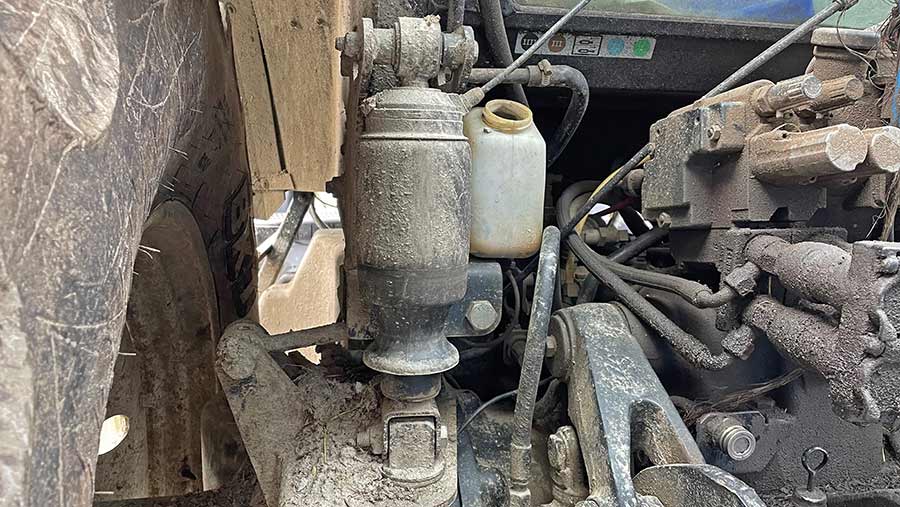
© James Andrews
New Holland TM165 cab air suspension
Keen to give his 2002 New Holland TM165 a bit of modern-day luxury, Mr O’Neill swapped the sprung cab suspension for a home-made air setup.
After a bit of hunting around, he found some airbags from a DAF lorry that were the right size for the job.
He then set about machining some brackets on the lathe so that they would neatly bolt to the original spring mounting points.
The tractor came with air brakes, so he was able to tap into the existing air tank.
Pressure is controlled by a simple two-way air switch in the cab and there’s a gauge to help the driver find the best setting.
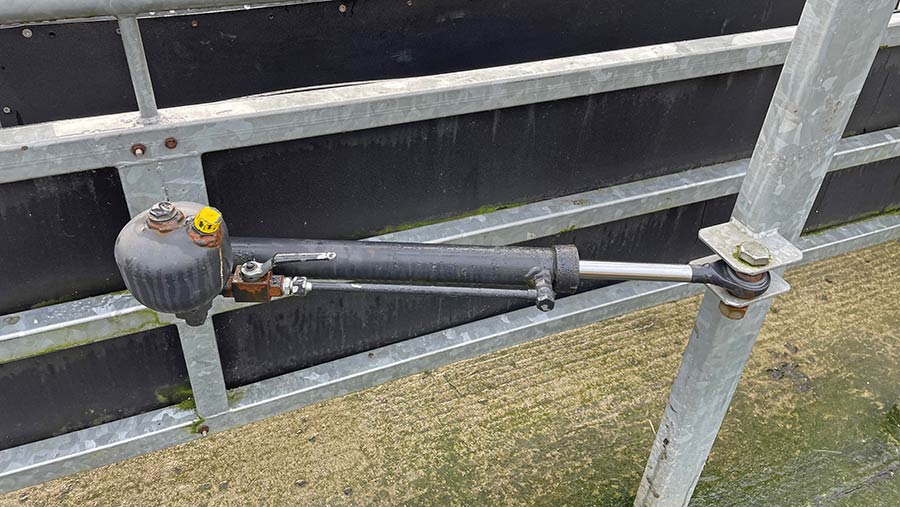
© James Andrews
Cattle handling system
When it came to putting together his perfect cattle handling system, Mr O’Neill decided to incorporate some bespoke items.
These include a semi-circular forcing arrangement with a clever three-section gate.
This folds neatly as the animals move around the arc, pushing them toward the race without creating any dead space where they can become trapped.
To cater for different sizes of beast, the long race has adjustable sides which can be pushed in and pulled out manually to suit.
So that the sides can be locked in any position, he has fashioned a neat locking mechanism, which consists of a hydraulic ram attached to an accumulator with a tap between the two.
When the tap is open, oil flows between the ram and accumulator, allowing it to move. But when it is shut, the ram locks solid.
Other neat touches include a compact, concertina-style anti-backing gate and a pit next to the crush so that foot work can be carried out without having to bend over.

